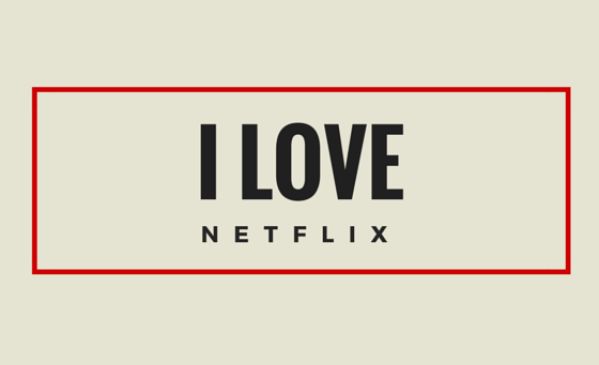The latest wave of the Kantar Millward brown’s AdReaction study shows that Gen X, Y and Z are sick of advertising; 85% of them avoid ads and 34% of them use ad blockers. Advertisers have responded with non-skippable ad formats and other gimmicks that force people to see their ads. But while people reject intrusive, forced advertising, they still continue to seek true emotional connections.
I recently asked my UCLA marketing students to create collages to illustrate what shopping, social media and health mean to them. Interestingly, all their artwork revolved around simple, yet powerful emotions. Reminiscing, being together and enjoying the simplest things in life were far more present in the collages than the brands, apps and social media they consume 11 or more hours per day.
Scholars and practitioners alike have established that emotions shape brand perception and ignite brand growth.
Here are 3 emotional triggers that brands can pull to truly connect with their audience and create ads people will seek, not skip.
1. Nostalgia
Sales of music downloads are on the decline, while the sales of vinyl records reached a 25-year high in 2016. Consumers of all ages are embracing physical formats. Downloading music is more convenient and the sound is of better quality, but consumers are willing to give up these functional benefits for an experience that is emotionally rewarding. In a world of hyper-connectedness, where we obsess about finding the next best thing, vinyl records bring us back to something we already know is great. Nostalgia brings some consistency to our lives and helps us keep track of what has changed and what remains the same.
It also enables us to relive positive memories and reminds us of special times. Addidas, Coca-Cola and KFC all capitalize on positive cultural memories of previous decades to forge meaningful connections between the past and the present. In the digital world, Pokemon GO is arguably the most successful example of nostalgia marketing. The game has coupled nostalgia with modern relevance. Among brick-and-mortar retailers, nostalgia is possibly what has saved Urban Outfitters. It is experiencing a revival after years of plummeting sales.
Until recently, the store was cluttered with flashy “sale” signs that scared its core audience of hipsters and attracted mainly cash-strapped teenagers. Gone now are the excessive markdowns, making room for glamorous photography and nostalgia products such as Polaroids, neon lights and “New Bohemian” furniture. Hipsters are now back at Urban Outfitters, shopping at one of the brand’s 400 stores or online. The website has been revamped to have the feel of a sophisticated Instagram account.
Nostalgia is a powerful emotional trigger across all age groups. Indeed, millennials and post-millennials may not have been around in the 1960s and 1970s, but they romanticize about these simpler times as an escape mechanism from their hectic work schedules and unrelenting responsibilities.
2. Community
Overwhelmed with social media platforms, dating apps and messaging services, people are seeking more genuine and meaningful ways to connect with each other. I regularly hear my students, co-workers and friends complain that meeting people online is impersonal and superficial. Sure they can access hundreds of “friends” from their phone in a matter of seconds, but these relationships are often short-lived and unfulfilling.
They claim to meet real friends at cross-fit studios, meditation classes and community groups. Cross-fit is a workout inspired by Olympic training that originated in ancient Greece. Most cross-fit facilities look like converted auto body workshops, do not offer changing rooms, and charge between $150 and $200 a month. That is five-times more than a typical gym.
Yet cross-fit, cycling and yoga studios are proliferating around the nation because they bind people together. These places give their members a sense of community: people get to know one another, help each other out, and accomplish something together. Rather than fancy equipment, it is social support that is motivating and making the accomplishment more rewarding. SoulCycle is a chain of cycling studios that has turned a boring workout on a stationary bike into an experience that some have described as a cult. At the heart of the company’s marketing strategy is the relationship with and between members, meaning everyone knows where the other members come from, if they have kids and why they are coming in late. This sense of community extends online, where members follow their instructors on social media to keep track of their music playlists, class schedules and pictures.
3. Simplicity
To be most impactful, a brand must elicit positive emotions in a fraction of second before the consumer starts assessing the functional aspect of the product. When provided with too many options, consumers focus solely on evaluating a product’s features at the expense of the brand’s emotional benefit.
This phenomenon, described by psychologist Barry Schwartz as The Paradox of Choice, is detrimental to our psychological and emotional well-being. The abundance of choice is all around us. The menu at The Cheesecake Factory includes more than 250 items. The average supermarket carries over 35,000 products. Starbucks claims to offer more than 80,000 drink combinations.
Overwhelmed with choice, consumers tend to prioritize the simplest options.
One of Starbucks’s most popular drinks is the tall latte non-fat. Le Pain Quotidien expanded from a single bakery in Belgium to over 200 stores worldwide by serving simple but perfect bread and pastries. Chipotle built its success by offering a simple, narrow menu.
Another way to convey simplicity is by using the most basic, yet authentic ingredients and materials. In contrast with Kellogg’s Nutri-Grain, Kind touts its granola bars as “snacks with ingredients you will recognize”. These ingredients include whole nuts and whole grains, along with fruit and spices. TOMS shoes are mostly made of canvas obtained by combining organic cotton and post-consumer plastics.
Beyond the product, the experience must also be simple. Researching, ordering and returning the product has to be pain-free. All these logistical steps can get in the way of enjoying what we buy. Dollar Shave Club did not take on Gillette by adding more blades and raising prices. Instead, it developed a simple direct-to consumer model paired with clever marketing and low prices. Like Dollar Shave Club, subscription-based businesses such as StitchFix, Birchbox and Fabletics rely on simplicity and consistency to attract and retain loyal customers.
The key to reaching consumers is not to trick them with ads they cannot skip, but to create brand experiences that they find emotionally absorbing. Pull any or all of these emotional triggers to create customers and fans. And always make sure these triggers are at the heart of your brand identity.
The Blake Project Can Help: Accelerate Brand Growth Through Powerful Emotional Connections
Branding Strategy Insider is a service of The Blake Project: A strategic brand consultancy specializing in Brand Research, Brand Strategy, Brand Licensing and Brand Education




